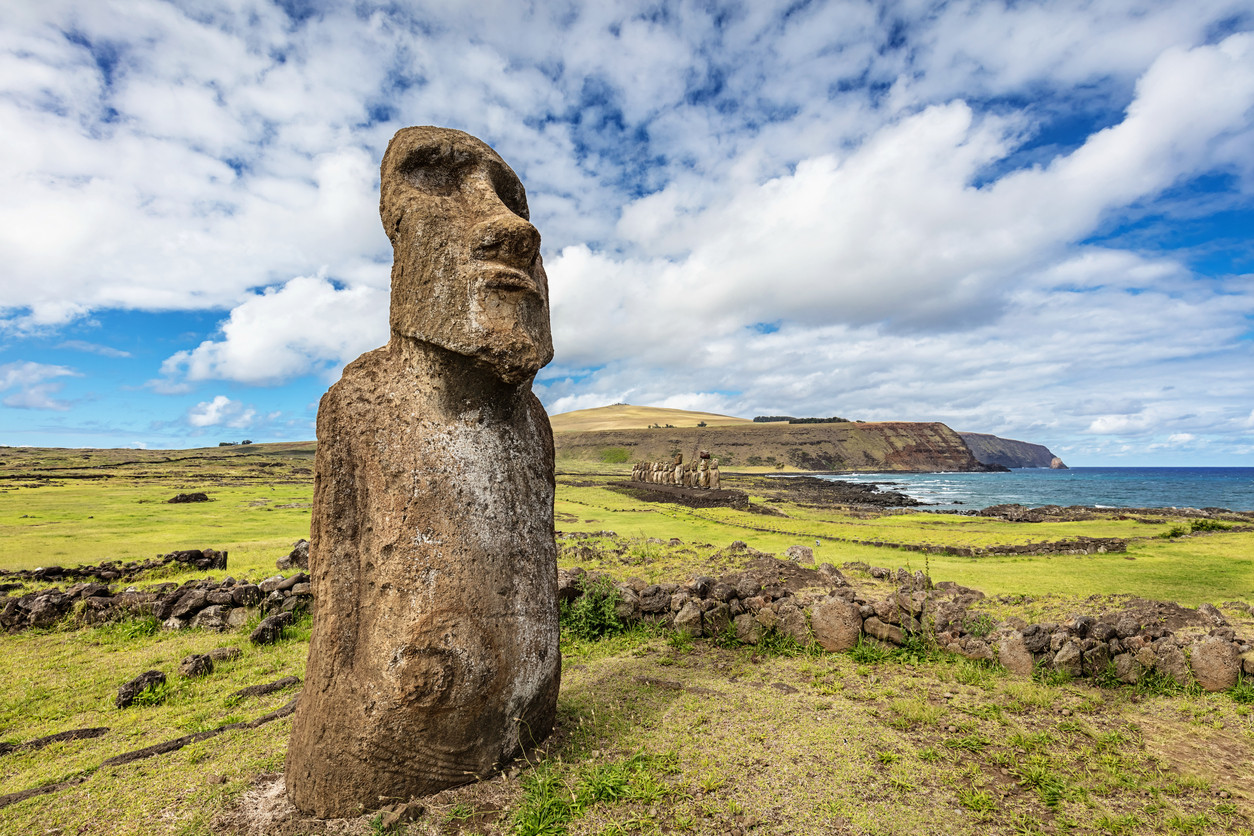The inhabitants consider them sacred; thousands of tourists have been awed by them. But now it seems inevitable that the rising sea will swallow them, plunging these fascinating artifacts of a mysterious ancient culture deep into its waters.
The Moai statues on Easter Island— as iconic as Stonehenge in England— have become an endangered species. Yet another victim of climate change.
“There’s a prediction that depending on what sea level rises do, that those [statues] could disappear in a catastrophic event, totally,” says Dr. Jane Down, a professor of archaeology at the University of the Highlands and Islands, who spent years studying the Moai statues.
Easter Island is one of the most remote inhabited islands in the world. Also known as Rapa Nui, this tiny isle is a Chilean territory in the southeastern Pacific Ocean— 3,700 kilometres west of South America and 1,770 kilometres from the nearest neighbouring island.
Although remote, Easter Island has been attracting tourists for decades, drawn by the massive ancient statues silently standing guard over the island. There are almost 1,000 of them along the coast.
The Moais were built in approximately 1400 – 1650 A.D. Carved into head-and-torso figures from the volcano Rano Raraku, these stone blocks average 13 feet in length and 14 tons in weight and were somehow (nobody still knows how) moved from the volcano quarry and placed on platforms all along the coast.
The statues’ platforms incorporate human remains and reveal some of the mysteries of the Moai and the island’s original inhabitants—Polynesian peoples that for some reason settled this tiny speck of land sometime between 700 and 1100 AD.
The island’s Moai and other artifacts bespeak of an ancient thriving culture that eventually suffered a demise brought on mainly by deforestation. Most scholars suspect that the Moai were created to honour ancestors, chiefs, or other important personages.
But now the Moai are threatened by intensifying storms and rising seas, caused by climate change. Downes says one of the main sites on the island, Ahu Tongariki with 15 of the statues, is particularly vulnerable—the area is low-lying and prone to inundation.
Downes is calling for action to save the Moai statues before it’s too late. At stake is not only the economy of the island—the islanders rely on tourism the statues attract—but more importantly, a loss of important archeological artifacts and the cultural identity of the island.
“I think that would be even more devastating because this is the identity of the island,” Downes says. “To me as an archaeologist, it’s tragic, and I absolutely can’t describe the sense of sadness that I feel when I see things literally being pulled and torn into the sea.”


